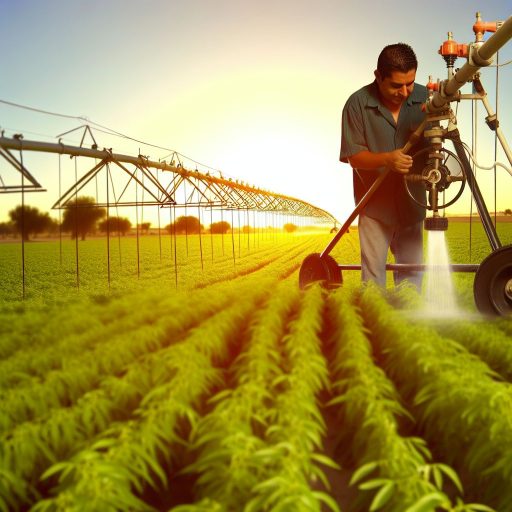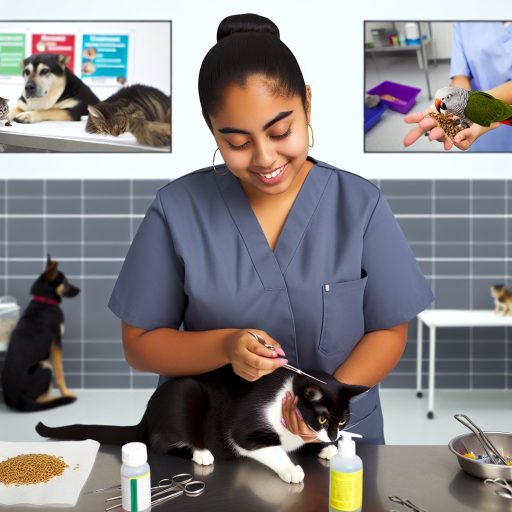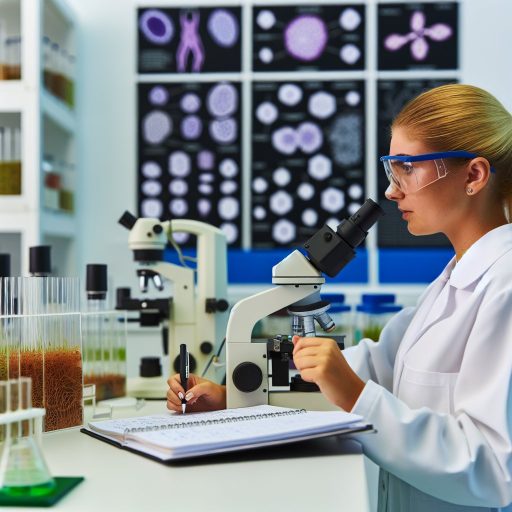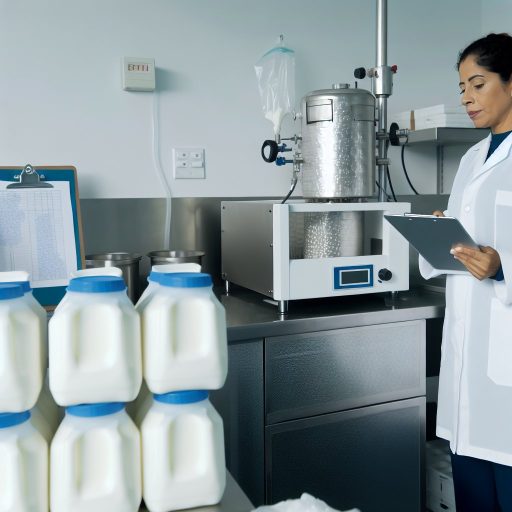Artificial insemination in livestock involves the introduction of semen into the reproductive tract of a female animal, such as a cow, without natural mating.
Importance of Artificial Insemination
Artificial insemination plays a crucial role in improving genetic traits in livestock.
It allows for the use of superior sires to sire offspring.
Benefits of Using Artificial Insemination Techniques
One benefit is the ability to select specific sires with desirable traits.
This leads to increased productivity and profitability in the herd.
Another advantage is the reduction of disease transmission.
AI eliminates the need for direct contact between animals during mating.
Additionally, AI enables better reproductive management.
This allows for precise timing of insemination, increasing the chances of conception.
Furthermore, it facilitates genetic diversity by widening the gene pool.
This reduces the risk of inbreeding within the herd.
Lastly, AI helps in the preservation of valuable genetics.
Frozen semen can be stored and used in the future.
This ensures the continuation of superior bloodlines.
Selecting the Right Animals for Artificial Insemination:
Discuss the criteria for selecting animals for artificial insemination:
- Healthy animals free from any diseases or infections.
- Animals with good reproductive history and no fertility issues.
- Animals that are of the appropriate age for breeding.
Considerations such as age, health, and reproductive history:
- Age plays a crucial role in the success of artificial insemination.
- The health of the animal directly impacts the success rate.
- Knowledge of the animal’s reproductive history helps in planning.
Importance of choosing genetically superior animals:
- Genetic superiority leads to better offspring with desirable traits.
- Select animals with proven genetic lineage for better results.
- Genetic diversity is crucial for the long-term health of the herd.
Proper Handling and Storage of Semen:
Proper handling and storage of semen are crucial aspects of successful livestock artificial insemination.
Maintaining the viability and quality of the semen ensures higher conception rates and better reproductive outcomes.
Importance of Maintaining Proper Storage Temperature for Semen:
Semen should be stored at a specific temperature range to preserve its quality and viability.
Transform Your Career Today
Unlock a personalized career strategy that drives real results. Get tailored advice and a roadmap designed just for you.
Start NowThe ideal temperature for storing semen is between 5-17 degrees Celsius.
Fluctuations in temperature can damage sperm cells, leading to reduced fertilization rates.
Discuss the Correct Handling Procedures to Prevent Contamination:
Wash hands thoroughly before handling semen to prevent the introduction of bacteria.
Use sterile equipment and containers to minimize the risk of contamination.
Avoid exposing semen to sunlight or extreme temperatures during transportation.
Highlight the Significance of Using High-Quality Semen Straws:
High-quality semen straws ensure the integrity of the sperm cells during storage and insemination.
Choose straws made from inert materials that do not interact with the semen.
Properly sealed straws prevent contamination and maintain the viability of the sperm cells.
By following these best practices for the handling and storage of semen in livestock artificial insemination, breeders can maximize reproductive success and ensure the health and quality of their livestock.
You Might Also Like: The Impact of Climate on Grape Cultivation
Correct Insemination Techniques:
There are two main methods of artificial insemination in livestock: recto-vaginal and intra-cervical.
Recto-vaginal insemination involves inserting the insemination gun into the cow’s rectum and depositing the semen near the cervix.
In intra-cervical insemination, the semen is deposited directly into the cervix using a specialized insemination gun.
It is essential to follow best practices for inserting the insemination gun to avoid injury or infection.
Make sure to lubricate the insemination gun properly and gently insert it into the reproductive tract.
Always ensure that the gun reaches the correct depth for optimal semen deposition.
Timing is crucial during the insemination process to maximize the chances of successful fertilization.
Ideally, insemination should occur within 12-18 hours after ovulation for the best results.
Precision is key when depositing the semen to increase the likelihood of conception.
Proper technique and attention to detail can significantly impact the success rate of artificial insemination.
Transform Your Career Today
Unlock a personalized career strategy that drives real results. Get tailored advice and a roadmap designed just for you.
Start NowBy following the correct insemination techniques and best practices, livestock producers can improve reproductive efficiency and genetic progress within their herds.
You Might Also Like: The Ethics of Insect Research: What You Need to Know
Maintaining a close watch on the estrus cycles of animals is crucial for successful artificial insemination.
Here are some key points to consider:
Importance of tracking the estrus cycles of female animals
- Understanding the estrus cycles helps determine the optimal time for insemination.
- Monitoring the cycles allows for proper planning and management of breeding schedules.
- Knowledge of the cycles helps in maximizing breeding efficiency and increasing conception rates.
Methods for detecting when animals are in heat
- Visual observation of behavioral changes such as restlessness, mounting, and vocalization.
- Physical signs like swollen vulva, clear or mucous discharge, and increased mucus membrane color.
- Using tools like heat detection patches, chin-ball markers, and electronic activity monitors for accuracy.
Significance of inseminating animals at the right time in their cycle
- Inseminating animals at the correct time increases the chances of conception.
- Timing insemination correctly minimizes the number of services required per conception.
- It is essential for achieving a synchronized calving season and optimizing reproductive performance.
By closely monitoring the estrus cycles of livestock and ensuring insemination is done at the right time, producers can enhance breeding efficiency and ultimately improve their overall herd productivity.
Delve into the Subject: How to Network in the Conservation Science Field
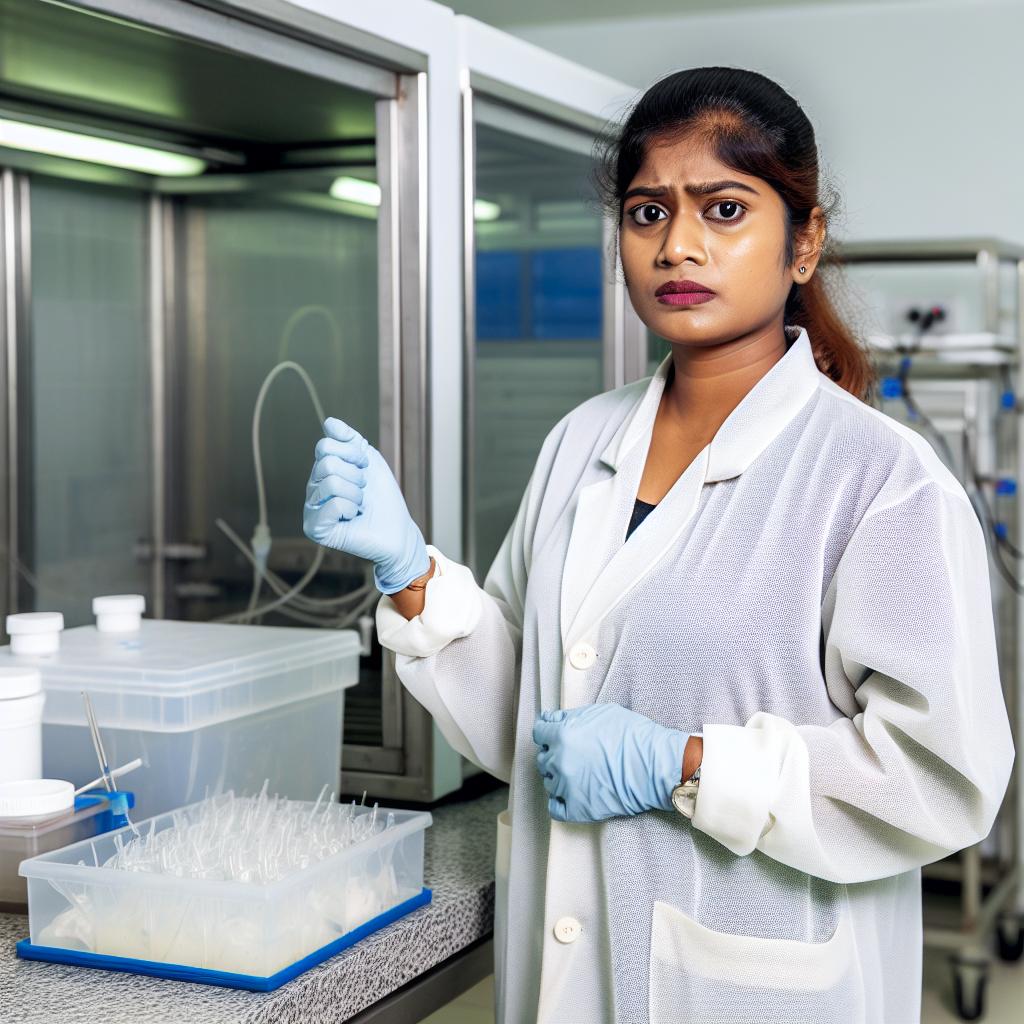
After the artificial insemination process, it is crucial to focus on post-insemination care to maximize the chances of successful conception and ensure the health and well-being of the animals involved.
Here are some key aspects to consider:
Post-Insemination Procedures
- Follow up with a veterinarian to confirm successful insemination.
- Implement proper nutrition and hydration protocols for the animal.
- Monitor and record any unusual behavior or symptoms in the animal.
- Keep the animal in a clean and comfortable environment to reduce stress.
It is essential to be diligent in post-insemination care to increase the likelihood of a successful conception.
Monitoring the animal’s health and behavior is paramount in identifying any issues early on.
Importance of Health Monitoring
- Regularly observe the animal for any signs of illness or distress.
- Record body temperature, appetite, and any abnormal discharges.
- Consult with a vet if there are any concerns or unusual symptoms.
- Administer any necessary medications or treatments as recommended.
Monitoring the health of inseminated animals is crucial in ensuring their well-being and detecting any potential complications that may arise.
Early intervention can make a significant difference in the success of the insemination process.
Managing Pregnant Animals
- Adjust feeding regime to accommodate the needs of a pregnant animal.
- Provide adequate space and bedding for comfort and safety.
- Schedule regular check-ups with a veterinarian throughout the pregnancy.
- Prepare a suitable birthing area and have necessary supplies on hand.
Properly managing pregnant animals is essential to ensure a successful pregnancy and delivery.
Ensuring the animal is comfortable, healthy, and well-cared for throughout the pregnancy will help increase the chances of a positive outcome.
Delve into the Subject: Case Studies of Successful Agricultural Policies
Importance of Maintaining Accurate Records
Accurate records provide a historical account of all breeding activities.
Records help in tracking the fertility status of individual animals.
It allows for the identification of successful breeding techniques and practices.
Records can help in evaluating the overall reproductive performance of the herd.
Accurate records are essential for complying with regulatory requirements.
Transform Your Career Today
Unlock a personalized career strategy that drives real results. Get tailored advice and a roadmap designed just for you.
Start NowInformation to Record for Each Inseminated Animal
- Date of insemination
- Animal identification details (breed, age, weight, etc.)
- Source of semen used
- Insemination technique employed
- Technician or breeder performing the procedure
- Any observations or notes related to the procedure
Significance of Data Management in Improving Breeding Success Rates
Data management helps in analyzing trends and identifying successful breeding practices.
It enables breeders to make informed decisions based on historical data.
Tracking breeding outcomes can help in adjusting breeding strategies for better results.
Data management allows for the identification of genetic trends and improvements over time.
Improving breeding success rates ultimately leads to better productivity and profitability for the livestock operation.
Successful Breeding Techniques for Livestock
Following best practices for livestock artificial insemination is crucial.
Proper hygiene maximizes the chances of successful breeding programs.
Selecting quality semen is an essential part of this process.
Using the correct technique for insemination also contributes to success.
It is important to prioritize the well-being of the animals involved.
Seek guidance from professionals when needed to ensure effectiveness.
Implementing these techniques can significantly improve breeding programs.
These improvements contribute to the overall productivity of livestock operations.
Don’t underestimate the impact of best practices on breeding success.
Take the time to learn and apply these techniques effectively.
Optimal results in genetic improvement are achievable through these efforts.
Additionally, consider overall herd management in your strategies.
Additional Resources
ANSC – Animal Science | University of Maryland Catalog
Hogs & Pork – Sector at a Glance | Economic Research Service
[E-Books for Sale]
The Big Book of 500 High-Paying Jobs in America: Unlock Your Earning Potential
$19.99 • 500 High-Paying Jobs • 330 pages
Explore 500 high-paying jobs in America and learn how to boost your career, earn more, and achieve success!
See All 500 High-Paying Jobs of this E-Book
1001 Professions Without a Degree: High-Paying American Jobs You Can Start Now
$19.99 • 1001 Professions Without a Degree • 174 pages
Discover 1001 high-paying jobs without a degree! Unlock career tips, skills, and success strategies for just $19.99!

